If you love a great cup of coffee but have yet to try making it with a French press coffee maker, it’s time to up your morning coffee ritual. While using automatic drip machines may seem more accessible, I’m here to convince you otherwise, and you may never look back.
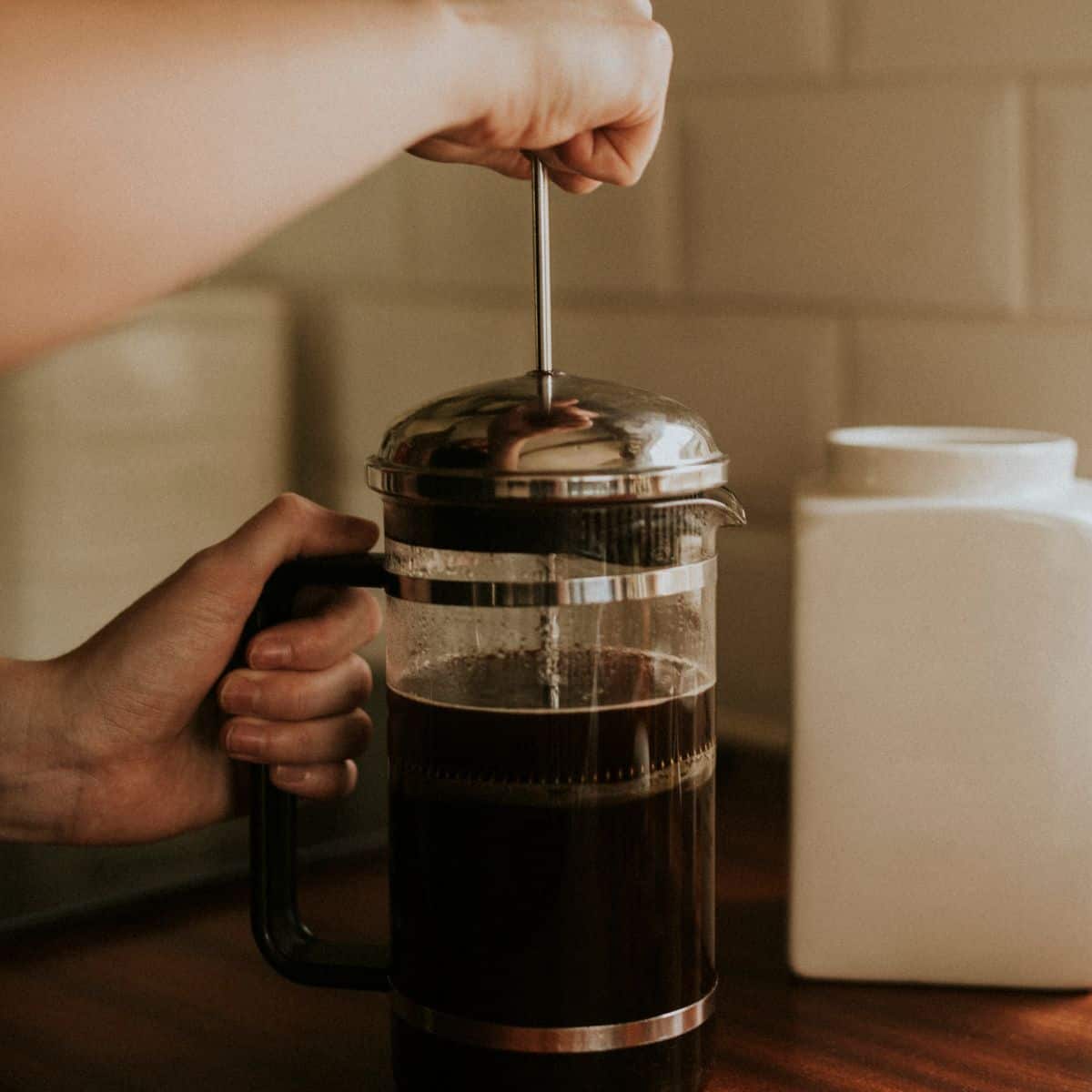
If you love your java, you should also check out my recipe for an Iced Caramel Latte and my guide on Iced Coffee vs. Iced Lattes. If you like a little kick in your cup of joe, you can try my Snickers Irish Latte made with Baileys and Skrewball.
Jump to:
- Why You’ll Love This Brewing Method
- What is a French Press?
- What Makes the French Press Special?
- What Kind of Coffee is Best for a French Press?
- What is the Perfect Ratio for Coffee to Water?
- How to Make the Perfect Cup of Coffee with a French Press
- Expert Tips
- FAQ
- Equipment Recommendations
- Related Recipes and Guides
- French Press Ratio Recipe
Why You’ll Love This Brewing Method
- Rich Flavor Profile: The method allows essential oils and fine coffee particles to pass through, resulting in the best cup of java that is rich, full-bodied, and robust flavor.
- No Paper Filters Needed: This brewing method doesn’t require paper filters, which not only reduces waste but also ensures that more coffee oils (which carry flavor) end up in the cup rather than absorbed by the filter.
- No Electricity Required: This is a manual brewing method that is perfect for traveling, places without electricity, or outdoor activities like camping.
- Affordable and Accessible: Compared to high-end machines, French presses are more affordable and widely available, making them accessible to a broader range of coffee enthusiasts.
What is a French Press?
A French press is a coffee brewing device that presses the grounds with hot water, creating a perfectly brewed cup of joe. Also known as a coffee press, coffee plunger, or press pot, this device has been around since the late 1800s.
A quick history of the French Press:
- The first idea for the press was patented in France by two inventors and featured a cheesecloth fitted to a rod in a pot.
- In 1929 another version of the press was patented in the United States by designer Attilio Calimani.
- Several years later, in 1958, the company Martin S.A. patented an improved design under the brand name Melior.
- The Danish-Swiss company Bodum purchased the company in 1991 and popularized the device in Europe. Bodum is still one of the top producers of the French press today.
Although the design has changed over the years, its basic design has remained the same. French presses are available in many different styles and materials but tend to have the same cylindrical carafe with a filtering nylon or silicone mesh plunger inside. The body of the press is typically made of single or double-walled glass, metal, or ceramic and comes in several different sizes, depending on your quantity needs.
Although it may seem like the different styles and materials are purely aesthetic, functionality is definitely a factor. For example, a single-walled glass press will lose heat faster than a thicker-walled ceramic or double-walled glass version. A longer brew at a hot temperature equals a more balanced extraction of flavors and oils since the water temperature affects the solubility of the grounds.
What Makes the French Press Special?
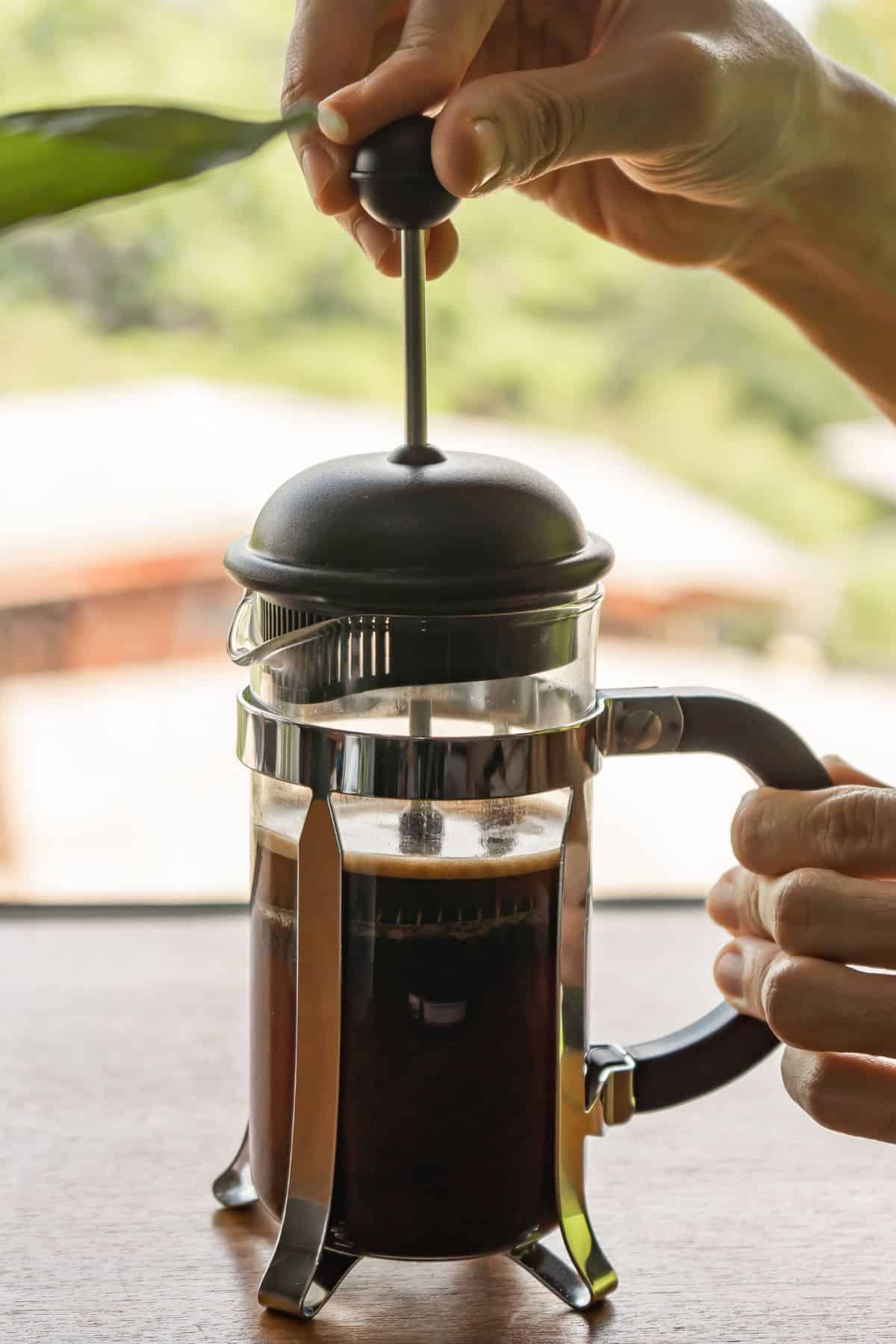
What makes this process so unique is the way that the grounds and hot water interact. In an automatic drip machine, hot water passes through ground beans. The contact the hot water has with the grounds is brief, only extracting some flavors and oils from the grounds.
In a French press, grounds are in direct contact with the hot water, around 200 degrees Fahrenheit, to be exact, for anywhere between 2 to 10 minutes. This direct contact, paired with the brewing time, means that you are in control of the boldness and strength without anything lost. That alone makes this brewing device very special!
Unlike an automatic machine, which uses a paper filter to keep the grounds out of your beverage, the press uses a mesh screen metal filter. This screen retains the rich and flavorful oils to pass through into the brew instead of being caught by the paper filter. An added bonus is its simplicity and portability, allowing you to bring it camping or traveling for your ideal cup no matter where you are.
What Kind of Coffee is Best for a French Press?
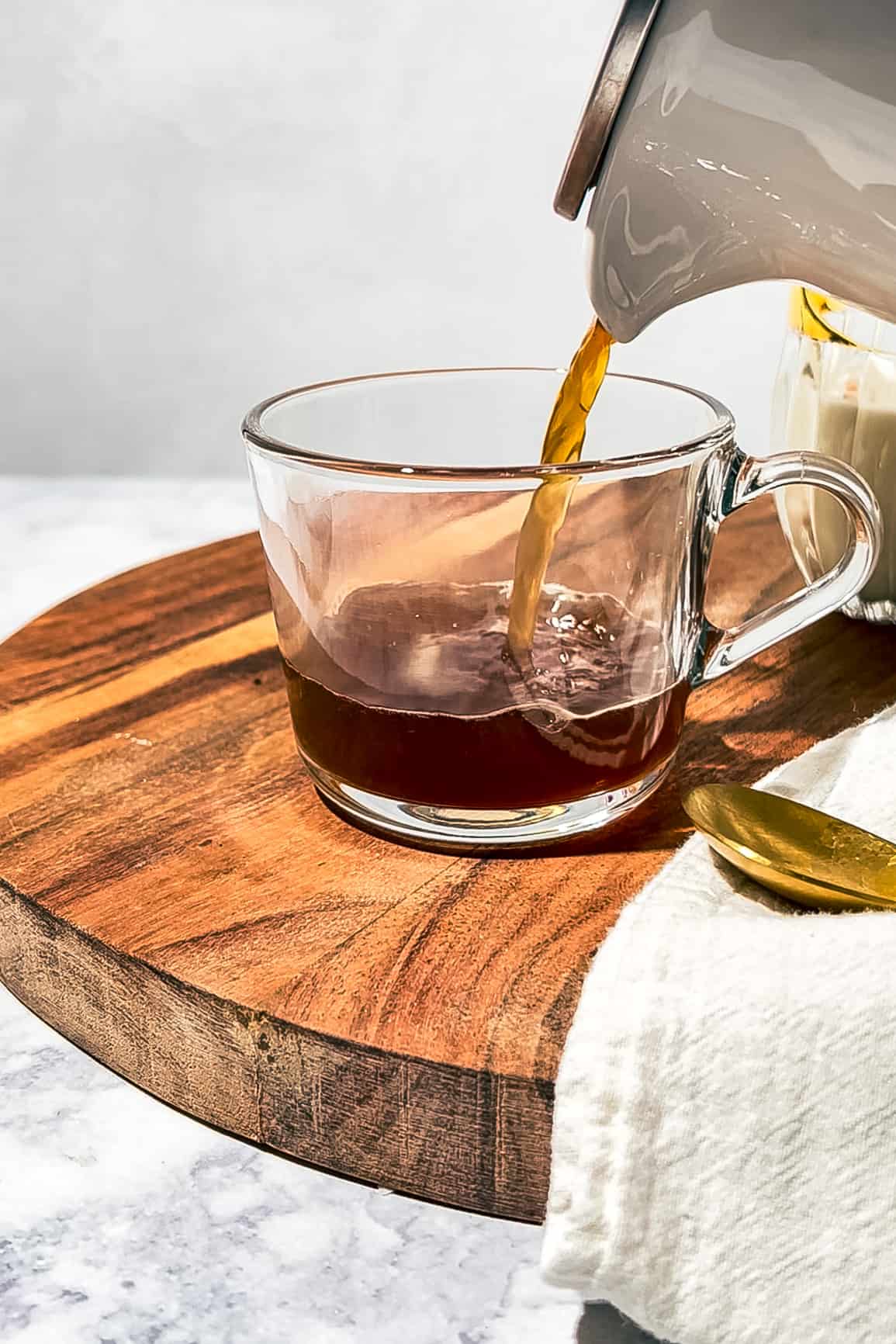
There are 2 major things to consider when choosing the best coffee for this method – roast and grind.
Roast
Many coffee enthusiasts recommend a medium or dark roast for French press. These roasts tend to have a richer, fuller body that works well with this type of immersion brewing method.
But really, the best roast mostly depends on your taste preference, so ultimately you should go with your favorite type of coffee. The French press method extracts more caffeine from the coffee grinds because of the longer brew time and contact with hot water than an automatic drip.
Note about caffeine: Dark roasts are generally slightly less caffeinated than light or medium roasts. The dark roasts lose some of their mass during the roasting process, making the caffeine content a touch lower.
Grind
For a French press, medium-coarse grinds are ideal. The perfect grind size is larger than what you’d use for drip coffee but smaller than what you’d use for cold brew coffee.
The coarser grind prevents the grounds from seeping through the press filter and becoming over-extracted, which can result in a bitter taste. Also, the fresher the grind, the better.
When grinding your own beans, aim for a consistency similar to kosher or chunky sea salt. Many home grinders have settings for different brewing methods, so you can select the coarse grind setting if available. (See recommend equipment section below for a home burr grinder that has different settings.)
If grinding in a store, use their designated French press setting. To check the grind size, it should not be fine and powdery like fine table salt (which is too fine), nor should it be extremely chunky.
A good way to know if you’ve got the right grind is by pressing it with a spoon or your fingers; it should feel distinctly gritty, not smooth.
To troubleshoot the grind size:
- If you find your coffee is too weak or sour, the grind might be too coarse.
- If it’s too bitter, it might be too fine.
- Adjust accordingly for your next brew.
What is the Perfect Ratio for Coffee to Water?
Perhaps you prefer a stiff cup that gives your brain a buzz first thing in the morning. Or, you could be a mild roast fan; just enough flavor to get the gears turning but not to make your hair stand up on its own.
Coffee drinking is a personal experience for everyone, so if you’re wondering what amount of grounds you should put in your French press, there is a simple ratio to get you started.
When using a French press, follow the golden ratio of 2 tablespoons of coffee to 8 ounces of water.
- A 1:12 ratio of coffee to water or 12 grams of water to one gram of coffee makes an average-strength brew.
- Follow a 1:15 ratio of coffee to water or 15 grams of water to every one gram of coffee for a more robust cup.
- The best cup of coffee is two tablespoons to eight ounces of water.
- For a weaker cup of coffee, use less coffee with more water.
- Use more coffee with less water for a more robust flavor.
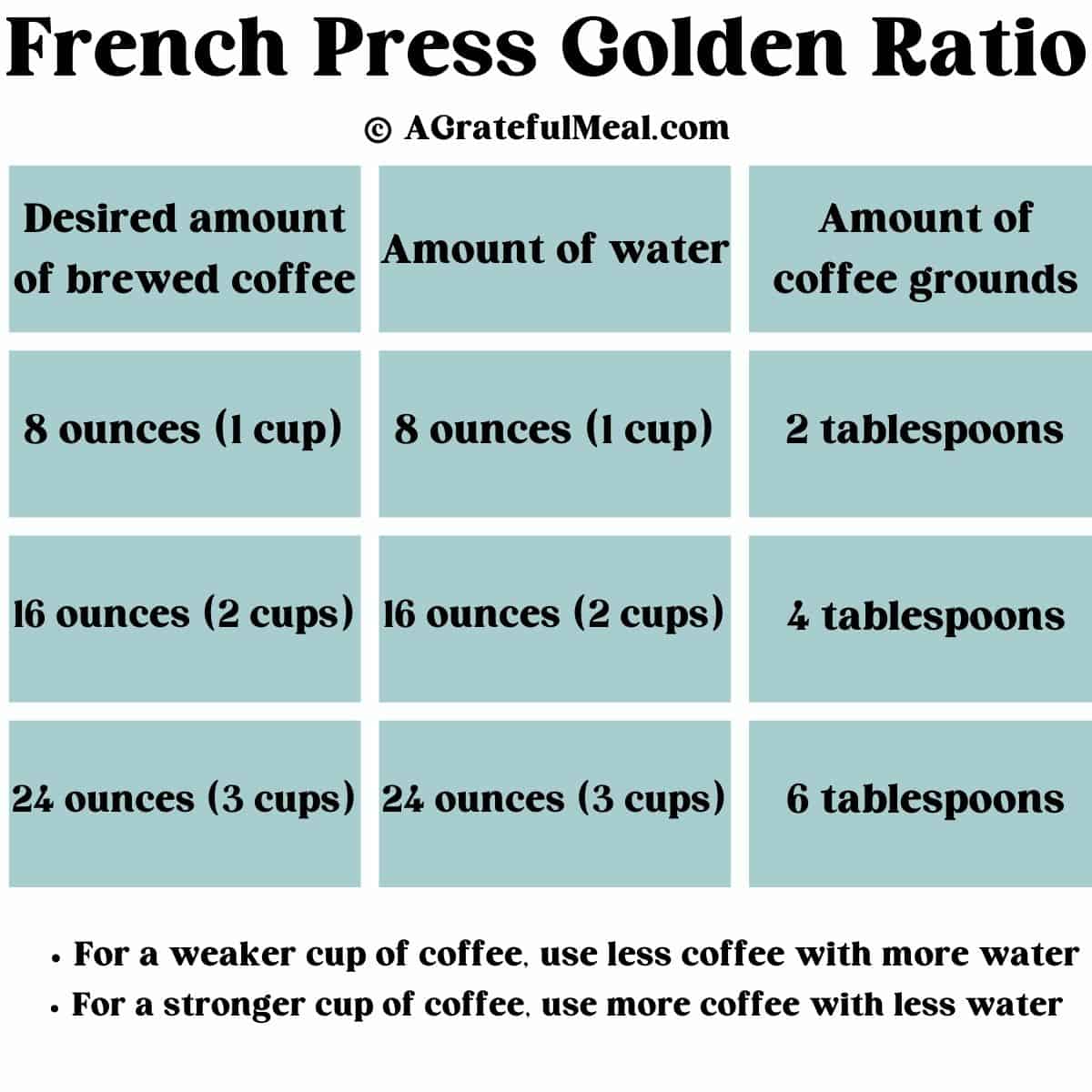
You may need to do some trial and error to determine your ideal ratio, but the golden ratio is a good place to start. Since this method will produce a more flavor-packed cup of joe, you may not need to use as many grounds for a more full-bodied cup as you thought.
How to Make the Perfect Cup of Coffee with a French Press
Now that you know a little more about how this method works, let’s learn how to make most delicious coffee!
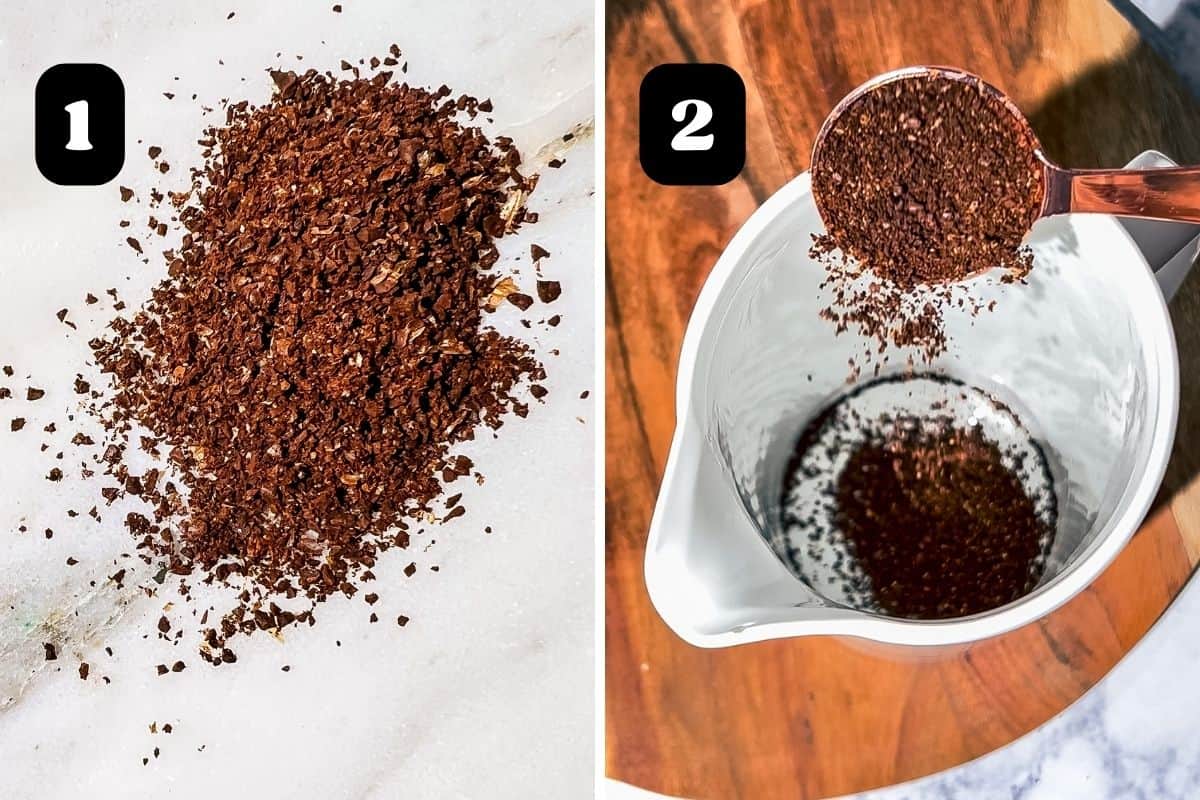
Step 1: Grind your own beans for a coarse, even grind that is super fresh. A coarse grind will ensure that the grounds don’t slip through the filter into your morning coffee. You can grind beans at the grocery store or buy pre-ground coarse ground beans, but nothing compares to freshly ground!
Step 2: Scoop your fresh ground coffee into your press carafe.
Boil water, turn it off, and let it sit for two minutes before pouring it over your grounds. You don’t want to use super hot boiling water; the ideal temperature is around 200 degrees F, and boiling is 212 degrees F.
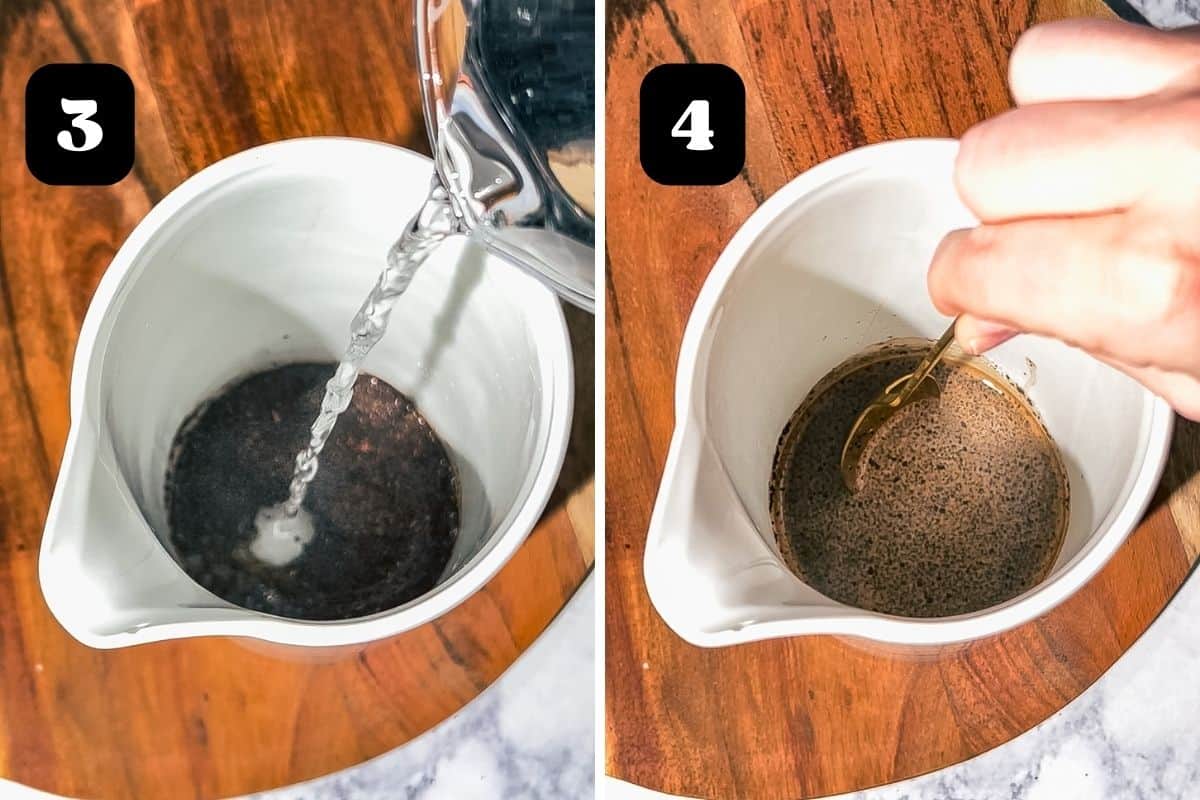
Step 3: Pour ⅓ of the water over the grounds.
Step 4: Give it a gentle stir. By doing this the grounds are able to distribute evenly and allows them to “bloom”, releasing oils and flavor.
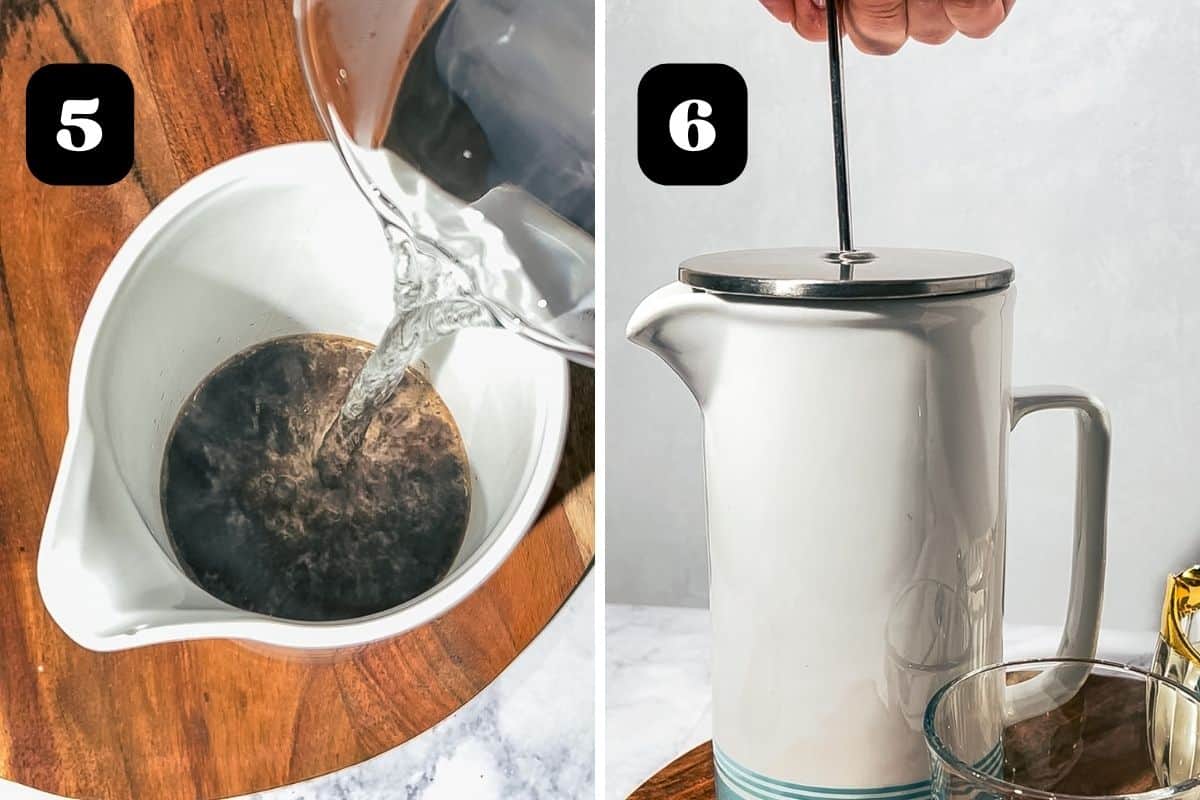
Step 5: Pour the rest of the water into the beaker.
For a 12-ounce press, let the grounds steep for no less than 4 minutes, waiting up to 10 minutes for a more potent cup.
Step 6: Place the filter-plunger onto the top of the carafe and avoid touching the brewing coffee if possible. This will prevent the heat from escaping as the coffee grounds steep in hot water.
After steep time is up, slowly and evenly lower the plunger. If you do this step too quickly, you may end up with spilled coffee or lots of grounds escaping into your fresh brew. Once the filter has almost reached the bottom, stop pushing it.
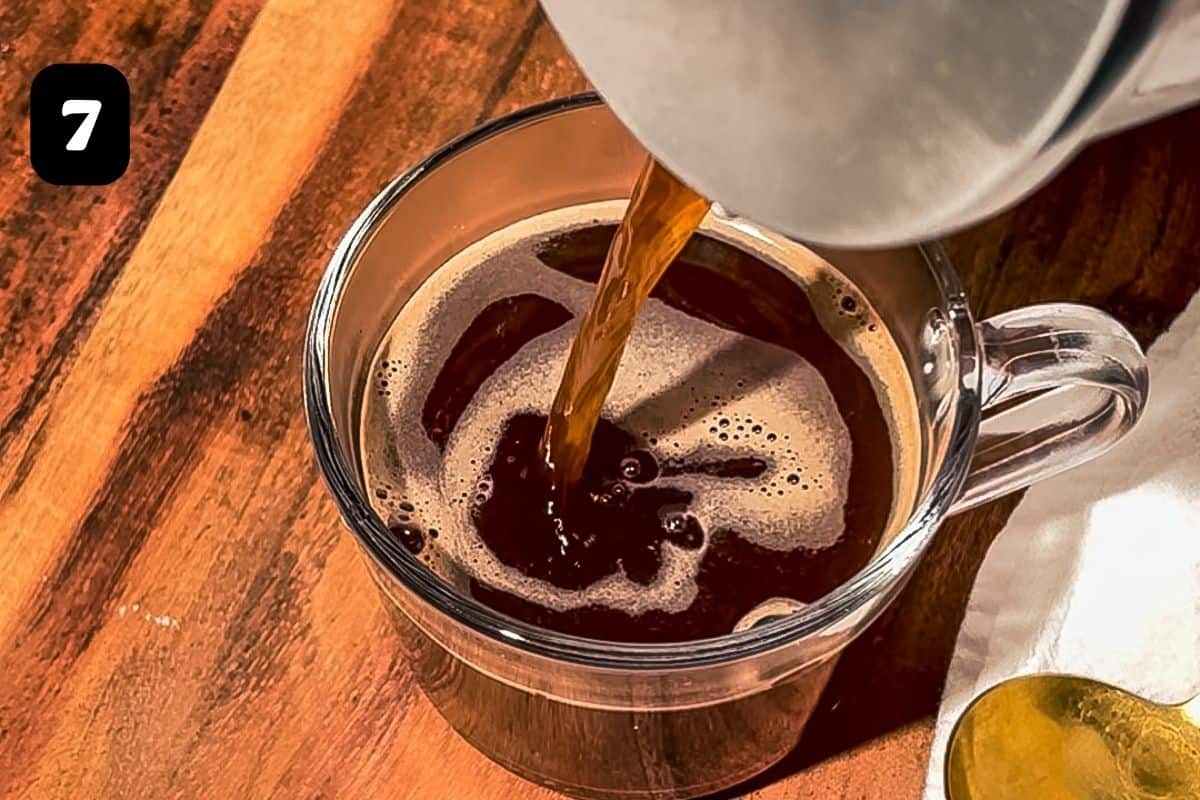
Step 7: Pour yourself a hot, fresh cup and enjoy!
Expert Tips
Depending on your preferred flavor preference profile, you can try a couple of different tweaks to adjust things like bitterness and acidity.
Here are a few tips and tricks:
- If possible, avoid using a metal spoon if you have a press with a glass carafe, as it can lead to tiny cracks in the glass. You can use a wooden spoon instead.
- Make sure to pour all of the coffee out of your press once it’s done brewing. The longer you leave the grounds in contact with hot water, the extraction will continue, resulting in a bitter flavor or unpleasant taste.
- If you don’t have your own grinder, purchase your beans at a grocery store that has a grinder available. Stores will often have the grinder available right in the coffee aisle or at the front of the store. Whole Foods and Costco are two national grocery chains that provide a grinder.
For coffee lovers, this method is one of the best for making a full-bodied, flavor-packed cup. Not only does the process get the most out of your coffee bean, but it also leaves you with layers of flavor that don’t come from an automatic drip coffee maker. I hope you try and love this brewing method as much as I do!
FAQ
Can you use pre-ground coffee in a French press?
I would advise against it as most pre-ground coffee is ground for automatic drip machines, which is too fine of a grind. If the grind is too fine, you might end up with coffee grounds in your cup and a more bitter flavor.
The best results with a press generally come from beans that are ground to the appropriate coarseness just before brewing. If you do use pre-ground coffee, look for brands that offer a coarser grind specifically for French press, such as Primos Coffee Co. or Gevalia Coffee.
However, if you must use standard pre-ground coffee, decrease the brew time. Finer grounds need less time to extract the flavors and can become bitter if you leave it for too long. Remember that fine ground beans can create a muddy cup of coffee, as they are more likely to pass through the screen and make it into your cup.
How do I clean my French press?
Cleaning a your press efficiently involves a few key steps:
- Empty and Rinse: After use, discard the coffee grounds. Then, disassemble the press, separating the plunger and filter components.
- Wash Thoroughly: Use warm, soapy water to clean all parts. A bottle brush can be helpful for the carafe, and a sponge or cloth for smaller parts. For a deeper clean, use a vinegar or baking soda solution.
- Dry and Reassemble: Rinse everything well to remove soap, dry completely, and then reassemble the press.
Key Points:
- Avoid washing coffee grounds down the sink.
- Disassemble the press for thorough cleaning.
- Regular cleaning ensures optimal taste and press functionality.
- Dishwasher Safety: If your press is dishwasher-safe, you can simplify cleaning by placing the disassembled parts in the dishwasher. However, hand washing is often recommended for longevity.
Equipment Recommendations

Stainless Steel French Press Coffee Maker
Buy Now →
Electric Kettle with Temperature Control Presets
Buy Now →
Cuisinart Electric Burr Coffee Grinder with Grind Selector
Buy Now →Related Recipes and Guides
Did you love this recipe?
Please leave a 5-star 🌟🌟🌟🌟🌟 rating & review below.
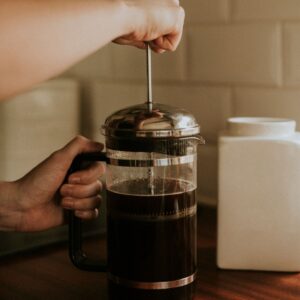
French Press Ratio Recipe
Ingredients
- 2 tablespoons coarsely ground coffee
- 16 ounces (2 cups) hot water (heated to ~200°F)
Instructions
- Scoop the fresh ground coffee into the French press.
- Pour ⅓ of the water over the grounds and give it a gentle stir.
- Pour the rest of the water over the grounds.
- Place the lid of the French press on top to prevent loss of heat. Do not push plunger down yet.
- Let the coffee steep for at least 4 minutes and up to waiting up to 10 minutes for a more potent cup of coffee.
- Slowly and evenly lower the plunger into the coffee. Once the filter has almost reached the bottom, stop pushing it.
Video
Notes
- For a weaker cup of coffee, use less coffee with more water.
- For a stronger cup of coffee, use more coffee with less water.
- Use coarsely ground coffee for your press. If you have a fine ground coffee bean, decrease the brew time for your French press. Finer ground coffee needs less time to extract the flavors and can become bitter if you leave it for too long. Fine ground beans can create a muddy cup of coffee, as they are more likely to pass through the screen and make it into your cup.
- Make sure to pour all of the coffee out of your French press once it’s done brewing. The longer you leave the grounds in contact with hot water, the extraction will continue, resulting in a bitter flavor or unpleasant coffee taste.
Nutrition
Don’t forget to follow along on social media or subscribe for alerts on new recipes!
You can catch me on Instagram, TikTok, Pinterest, and Facebook.





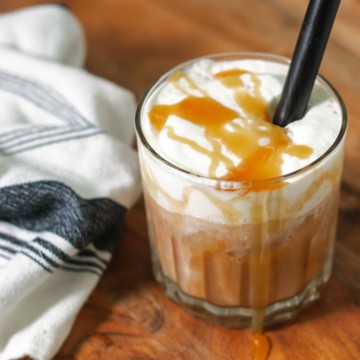
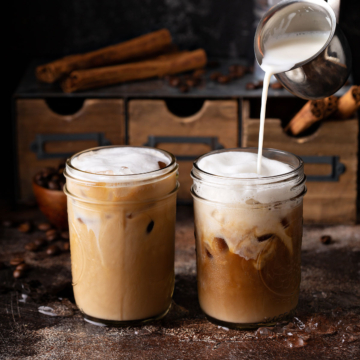
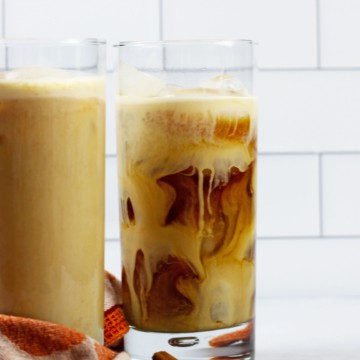
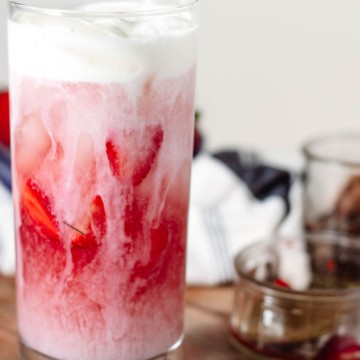
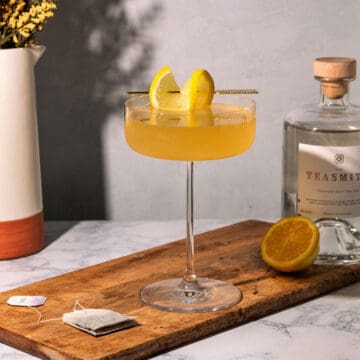
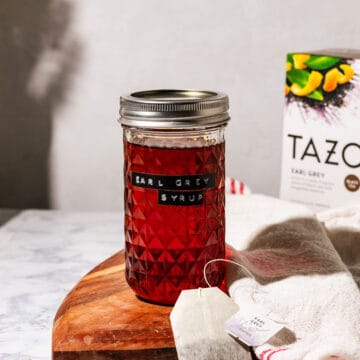
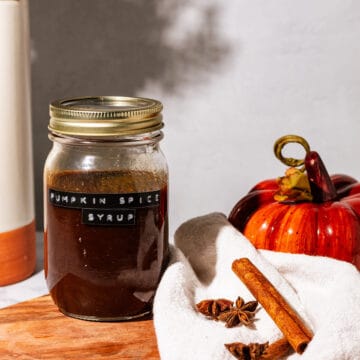
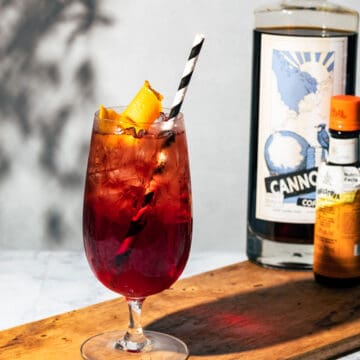
hamid
Thanks it was really useful for me cause i have two unused french press . Now i will serve my guests with this kind of coffee .
Melissa
I’m so glad it was helpful! Your guests are going to love the French press!
Lee
Excellent article about my favorite method of making coffee.
Melissa
It’s one of fav methods too! Glad you enjoyed the post 🙂